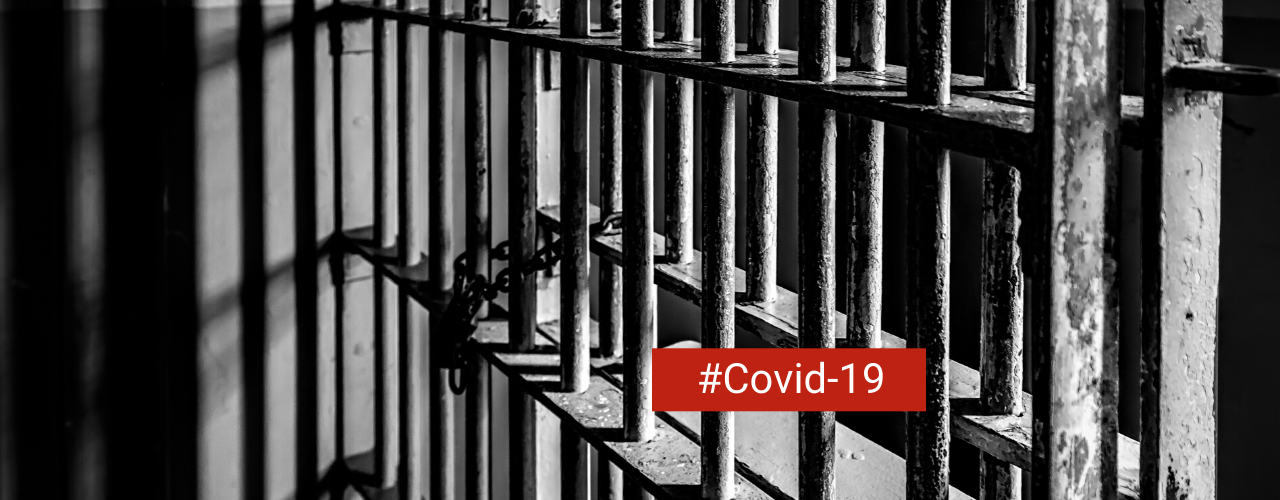
Keith Adams, JCFJ Social Policy Advocate, has sent a policy briefing document to Minister Charlie Flanagan and the Department of Justice and Equality (DJE) which puts forward three proposals for how the prison population can be reduced to mitigate the effects of the Covid-19 pandemic. The Jesuit Centre for Faith and Justice strongly believes that the risk to public health, should a number of prisons become cluster-zones for the virus, is too great to continue with the current density of the prisoner population.
The main defences against the spread of Covid-19 within the delay phase of the epidemic – social distancing, self-isolation and quarantine – are simply not achievable in the confines of an overcrowded prison. The Department of Justice and Equality and the Irish Prison Service must consider introducing policies to drastically reduce the prison population by moving progressively and rapidly towards a “one person, one cell” model for incarceration.
Three Policy Responses to the COVID-19 Emergency
1. Implement “One person, One cell” Approach for Delay Phase of COVID-19
The prison population needs to be immediately decreased by a total of 1,200 prisoners. It is proposed that 800 prisoners under sentence could be selected for full temporary release while 400 people currently on remand could be released pending trial. However, any ratio of people on custodial remand and prisoners under sentence would suffice once the overall prison population is reducing.
This is not proposal for a total blanket amnesty for over 1,200 prisoners, it is advocating for a “managed and accelerated” decrease of the prison population in two concurrent stages: reducing the custodial remand population; and accelerating temporary release for prisoners with short prison terms remaining or those in prison for less serious, non-violent offences.
2. Twelve Month Moratorium on Sentences of Less than a Year and Custodial Remand
The Department of Justice and Equality must liaise with the Presidents of the various Courts to instruct judges to reject any request for custodial remand if public safety is not at risk and to not issue sentences of less than twelve months. These instructions need to remain in place for at least a year. Coupled with the Response 1, this proposed moratorium would lessen the strain on the prison system, enabling the implementation of a “one person, one cell” approach
3. Future Cost Savings Should be Available for IPS, Probation and Community Services Now
If the prison population is decreased by 1,200 prisoners, there will naturally be projected cost savings in the future. In their last Annual Report, the IPS place the cost on a twelve month stay in prison at over 73,802 euro. These cost savings will not be available to the DJE in the present with a “managed and accelerated prisoner release”.
In order to operationalise Response 2, sentences of less than twelve months being diverted to the community, these future cost savings must be invested into community services, prisoner projects and the Probation Service to meet this increased demand on their services.
Conclusion: Decarceration is the Only Logical and Effective Policy Response
As prisons risk amplifying any outbreak of COVID-19 by becoming cluster-zones where transmissions occur back to the wider community, previously unimaginable policy responses need to be seriously considered. A lockdown of a detention facility is not an appropriate response based on the emerging experiences from other countries. A psychiatric ward in South Korea’s Daenam Hospital was put into lockdown in an attempt to confine and delay the spread of the virus. All but two of the 103 patients in the ward contracted COVID-19, with seven patients dying.
The timeframe for an effective response to reduce the prison population in order to have an effective delay phase is a matter of weeks, rather than the six months or a year which may be required during a period of normalcy. Speed will be of the essence as a reasonable number of the 1,200 prisoners can be released immediately. This will buy some time to effect risk assessments on the remaining number of eligible prisoners to have “one person, one cell”.
Decarceration is the only logical and effective policy response available. The decision is a case of when the implementation occurs. Any failure to quickly reduce the prison population will undermine any attempt to control COVID-19, locally and nationally.
Read the full Policy Briefing Document here

